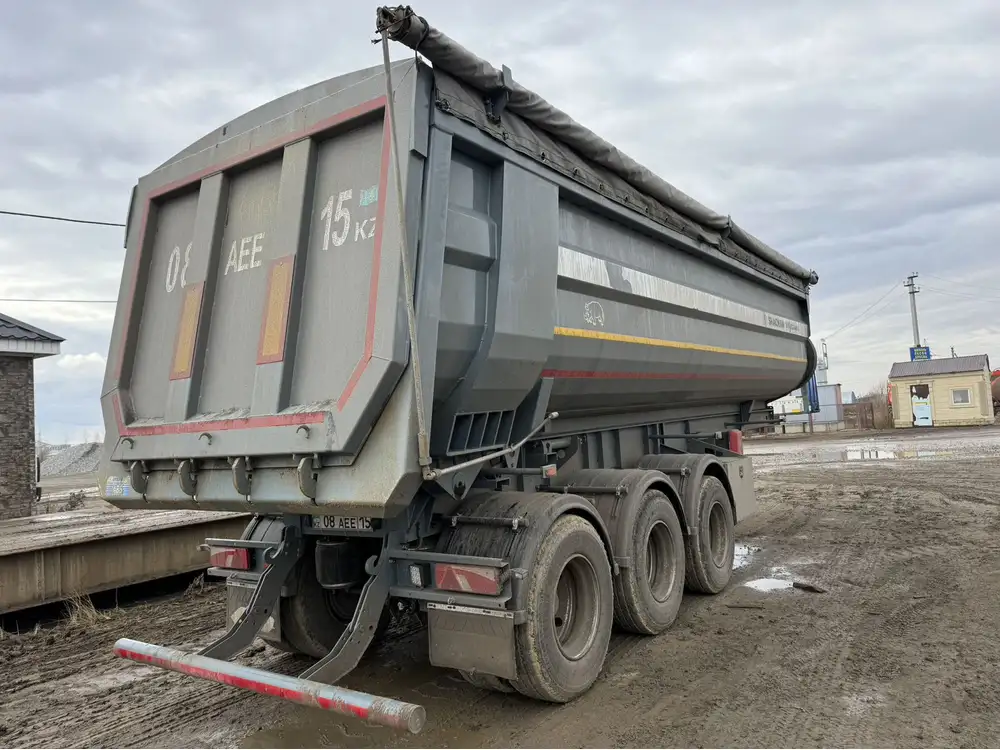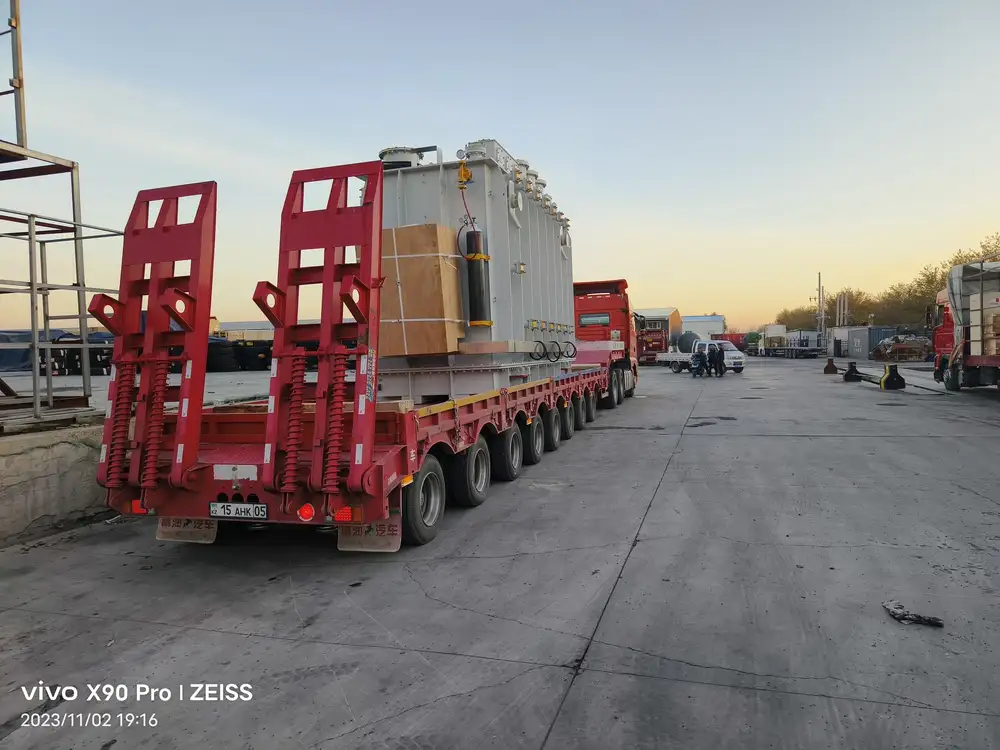When it comes to operating heavy-duty equipment, choosing the correct hydraulic fluid is crucial to ensuring optimal performance and longevity. For users of PJ Dump Trailers, understanding which hydraulic fluid to use can often seem daunting, but it doesn’t have to be. This comprehensive guide aims to elucidate the details surrounding hydraulic fluid requirements for PJ Dump Trailers, while also offering solutions to common questions that users may overlook.
Understanding Hydraulic Systems in Dump Trailers
What are Hydraulic Systems?
Hydraulic systems utilize pressurized fluid to transfer energy from one part of the equipment to another, enabling various functions such as lifting, lowering, and tilting.

Core Components of a Hydraulic System
- Hydraulic Pump: Converts mechanical energy into hydraulic energy.
- Hydraulic Fluid: The medium through which power is transmitted.
- Actuators: Hydraulic cylinders or motors that perform work.
- Control Valves: Direct the flow of fluid to various functions.
- Reservoir: Stores hydraulic fluid and allows for fluid expansion.
Importance of Choosing the Right Hydraulic Fluid
Selecting the proper hydraulic fluid is not merely a matter of getting it right; it’s instrumental to the functionality and safety of your dump trailer. The wrong fluid can lead to reduced efficiency, overheating, rapid wear and tear, and potential system failure.
Key Benefits of Using the Correct Hydraulic Fluid
- Enhanced Performance: Optimal viscosity and lubrication ensure smooth operation.
- Extended Equipment Life: Reduces wear on components, thus prolonging the lifespan of the trailer.
- Increased Safety: Prevents equipment malfunctions that could lead to dangerous situations.

Recommended Hydraulic Fluids for PJ Dump Trailers
Industry Standards and Recommendations
For PJ Dump Trailers, manufacturers generally recommend specific types of hydraulic fluids for various conditions. Commonly, these fluids come in classifications based on viscosity and chemical properties.
AW (Anti-Wear) Hydraulic Oil: Generally recommended for many hydraulic applications.
- ISO Viscosity Grade: Typically ISO 32, 46, or 68 depending on climate conditions.
- Additives: Includes anti-foam, anti-rust, and anti-wear components.
Bio-Based Hydraulic Fluids: More environmentally friendly options for those concerned about ecological impact.
- Composition: Often derived from vegetable oils or renewable resources.
Fire-resistant Fluids: Essential for high-temperature applications or specific work environments.
- Types: Water-containing and water-free fluids designed to reduce fire hazards.
Recommended Hydraulic Fluids
| Fluid Type | Viscosity Grade | Key Features |
|---|---|---|
| AW Hydraulic Oil | ISO 32 | Good for standard conditions |
| AW Hydraulic Oil | ISO 46 | Moderate temperature conditions |
| AW Hydraulic Oil | ISO 68 | High-temperature applications |
| Bio-Based Hydraulic Oil | Varies | Environment-friendly, biodegradable |
| Fire-Resistant Fluid | Varies | Designed for safety in hazardous areas |

Viscosity: The Heart of Hydraulic Fluid Selection
Selecting the right viscosity is about understanding how temperature affects the fluid’s behavior.
How Temperature Affects Viscosity
- Low Temperatures: Thicker fluids become more viscous and can impede flow.
- High Temperatures: Fluids get thinner, risking decreased lubrication and increased wear.
Choosing Based on Climate
It’s essential to choose a hydraulic fluid that will perform well in your geographic location. Warmer climates may benefit from higher viscosity fluids, while colder regions may require lower viscosity liquids.

Signs of Hydraulic Fluid Problems
Monitoring the hydraulic fluid’s condition is vital for equipment maintenance. Here are common indicators that your hydraulic fluid may need attention:
- Discoloration: A shift from clear to dark brown may indicate contamination.
- Increased Noise: Pumping sounds or vibrations can signify insufficient lubrication or air trapped in the system.
- Overheating: Excessive heat could spell trouble, indicating the need for cooler or higher viscosity fluid.
Regular Maintenance Practices
Implementing a maintenance schedule with regular fluid checks can prevent costly repairs.
- Fluid Level Checks: Monitor the reservoir to ensure fluid levels remain adequate.
- Contamination Testing: Use test kits to check for water or particulate contamination.
- Sample Analysis: Conduct thorough lab tests for wear metals and chemical breakdown.
How to Change Hydraulic Fluid in Your PJ Dump Trailer
Changing hydraulic fluid is crucial to maintaining system performance. Here’s a step-by-step approach:

Tools Needed
- Wrench set
- Fluid container for old fluid
- New hydraulic fluid
- Funnel
- Safety gloves
Steps to Follow
Preparation: Ensure the trailer is on level ground. Gather all necessary tools.
Drain Old Fluid:
- Identify the drain plug and carefully unscrew it.
- Allow the old fluid to fully drain into a container.
Replace Filter: If your trailer has a hydraulic filter, now is the time to replace it.
Fill with New Fluid:
- Using a funnel, pour the new hydraulic fluid into the reservoir.
- Fill it to the recommended level indicated on the reservoir.
Bleed the System: Run the trailer’s hydraulic system to expel any trapped air.
- Cycle all hydraulic functions (lifting, lowering) to ensure fluid reaches every actuator.
Check Fluid Levels Again: After bleeding, check the fluid level once more and adjust if necessary.
Seal Everything: Replace the drain plug and ensure no leaks before using the trailer.
Troubleshooting Common Hydraulic Issues
Even with proper fluid selection and maintenance, issues might still arise. Here are a few common problems and solutions.

Problem: Slow Operation
Diagnosing Factors:
- Low hydraulic fluid levels
- Contaminated fluid
Solutions:
- Check and refill fluid as necessary.
- Change the fluid if contamination is suspected.
Problem: Fluid Leaks
Diagnosing Factors:
- Worn hoses or seals
Solutions:
- Inspect and replace damaged hoses or seals promptly.
Problem: System Overheating
Diagnosing Factors:
- Incorrect fluid viscosity
- Blockages in the hydraulic lines
Solutions:
- Ensure the right viscosity fluid is used for your climate.
- Check for obstructions and clear them as needed.

Environmental Considerations in Hydraulic Fluid Selection
Environmental impact is an increasingly pivotal concern when choosing hydraulic fluids. Many manufacturers are now offering bio-based or environmentally friendly options that do not sacrifice performance for sustainability.
Benefits of Eco-Friendly Fluids
- Biodegradability: Break down naturally, lessening environmental impact.
- Non-Toxic: Lower risk to wildlife and ecosystems if a spill occurs.
Regulatory Compliance
Familiarize yourself with local regulations on hydraulic fluid disposal and seek products that comply with these guidelines to promote sustainability and corporate responsibility.

Conclusion
Choosing the correct hydraulic fluid for your PJ Dump Trailer is not merely a technical choice; it’s a commitment to performance, safety, and sustainability. By understanding the specifications, signs of problems, and maintenance required, you enhance your trailer’s operational efficiency and lifespan. Armed with the knowledge from this guide, you can confidently tackle any hydraulic fluid-related question or challenge, ensuring your Dump Trailer stays in prime condition for all your hauling needs.
Whether you’re lifting, unloading, or transporting, taking extra care with your hydraulic fluid can save you significant time, money, and headaches in the long run. Make the right choices—your equipment deserves it.



